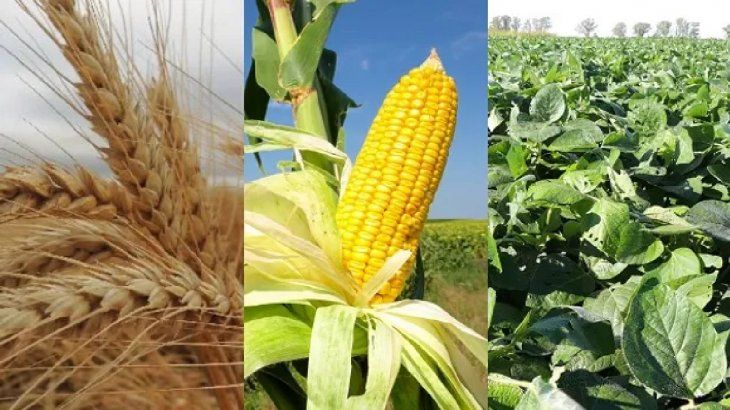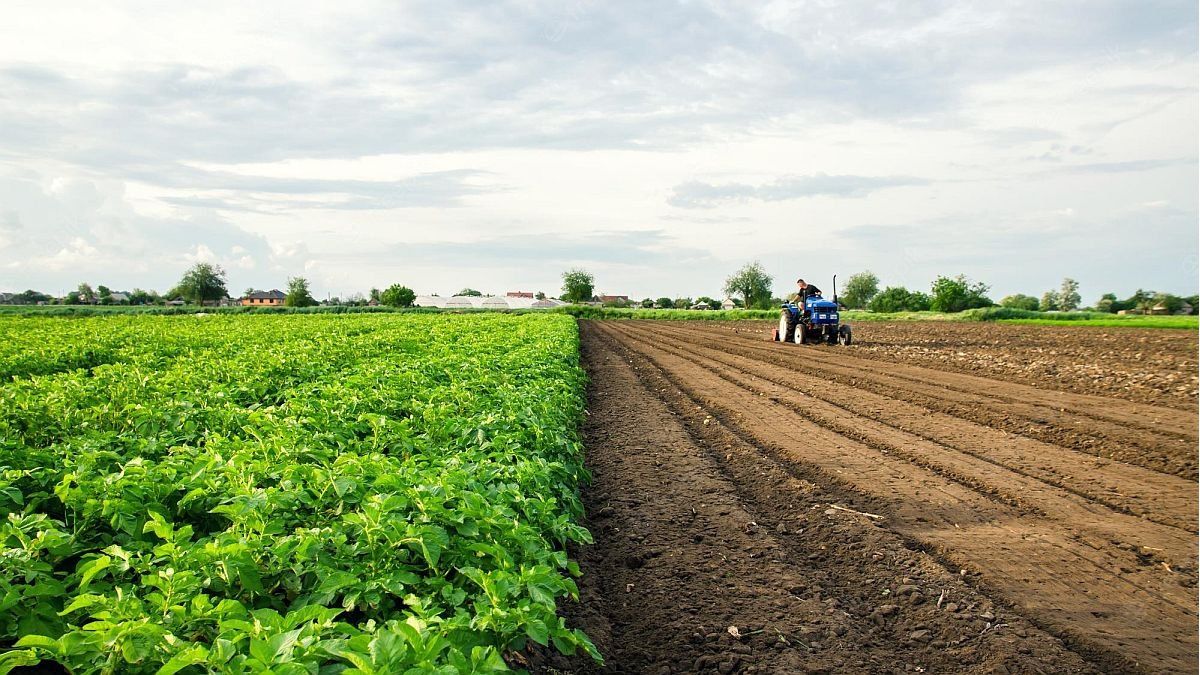image.png
In the first place, it is highlighted that the three campaigns were crossed by the “La Niña” event, with the Pacific Ocean at -1°C below normal temperature, this marks an intense event, which brings rains lower than normal and less frequently, progressively reducing soil moisture reserves. The maps show the percentage of useful water, that is, the water that can be extracted by crops, seen in the month of September 2020, 2021 and 2022.
We see in these maps that the area delimited with a circle, the area with the highest production levels in the country, has different ranges of humidity in the three years for this time, and the colors show that this is the year with the lowest level of reserves, among 0% and 20% humidity, practically devoid of humidity. With this reality, we see the harvest volume of the last two campaigns, considering the sum of wheat, soybeans and corn (these are the crops that occupy the largest area at the national level), and the harvest expectation of 22/23, although the harvest expectations 118 million tonsare very doubtful, considering the strong impact of the drought on planted wheat, and the difficulties in planting early corn.
In order to review what happened and infer what is to come, we see the national average yields of the three crops, in 20/21 and 21/22, the question is what will be the average yield of wheat this year, considering that 28 quintals per hectare was the average yield for 2020/21, and we are in worse conditions than in that campaign, also corn, which has been cutting average yields. So, there is a question mark for the performance of this 22/23, which will inevitably affect the national harvest volume.
On the other hand, the cost per hectare of the three crops is indicated, expressed in quintals per hectare of each of the grains, according to implantation costs (labor + supplies), harvest, marketing and rentals, for technological and productive levels of the South. of Santa Fe, and the committed quintals of soybeans, would not have varied in the three campaigns, while corn increased slightly, offsetting the high costs due to higher prices of grains, and wheat increased notably. See the costs in volume of grains, explains what the minimum yield should be, to recover the assumed costs, and the risk of losses or against margins, in case of production cuts.
Field Wheat Corn Soybean.jpg

Courtesy: National Radio
To move on to the aspect that directly affects the national macroeconomy, we review the volumes of grains exported in the three years, adding the millions of tons of wheat, corn, soybeans and soybean meal exported from January to December, so we must make the exception that we have the data from January to July of this year, which makes the volumes exported very high, considering that the records are missing from August to December 2022.
The foreign exchange earned by these three grains, in millions of dollars, is obtained from the volumes exported and the export prices, which were on the rise for the three grains, from 2020 to today. The threat for the coming months is a context of good yields in other producing and exporting countries, as is expected for our neighboring countries, Brazil, Uruguay and Paraguay, and/or a decrease in the global demand for grains, which brings cuts of international prices, and this is added to a poor local harvest, generating a potential lower income of foreign currency for the coming year, 2023.
Finally, we review the local macroeconomic variables of the last three years. We see the acceleration of inflation, from 36% in 2020 to almost 80% today, and its disarticulation with the rate of devaluation, notably lower than inflation in the last two years. Regarding the interest rate established by the Central Bank of the Argentine Republic, we have made an effort to maintain it at around 38%, until January of this year, when it began to rise to the current level of 78.5%, in efforts to align the interest rate to local inflation.
Conclusions
As was mentioned at the beginning, keeping in view the variables that cross the local reality should lead us to interpret them and make decisions accordingly. Every millimeter of rain that falls, every quintal harvested, every foreign exchange brought into our country, must be strategically managed, given that there will be no excess rain, the reserves are almost nil in the soil, the costs have already been met for the 22/23 campaign, and the harvest is not guaranteed, nor is the continuation of high international prices. Three droughts, three harvests, three contexts that set the course for the coming months, which could be a drought not only in terms of climate, but also in terms of money. Agricultural currencies are at risk and management will be what makes the difference between those who go through this context with health or different levels of damage.
Ing. Agr. Msc. agribusiness @DeEmilioMarian
Source: Ambito




